
According to NASA, a total solar eclipse happens when the Moon passes between the Sun and Earth, completely blocking the face of the Sun. People located in the center of the Moon's shadow when it hits Earth will experience a total solar eclipse. Learn more about the different types of eclipses here.
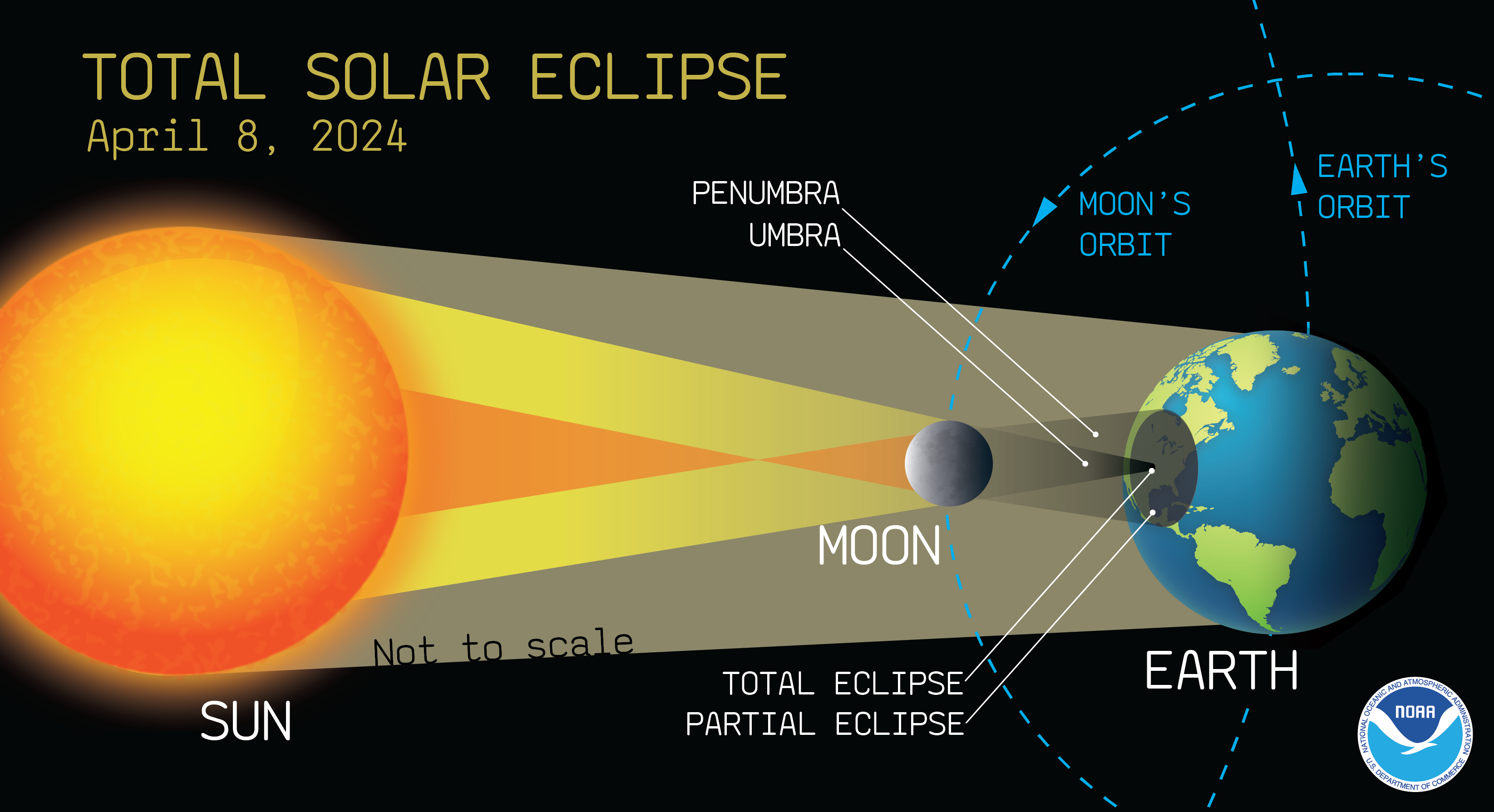
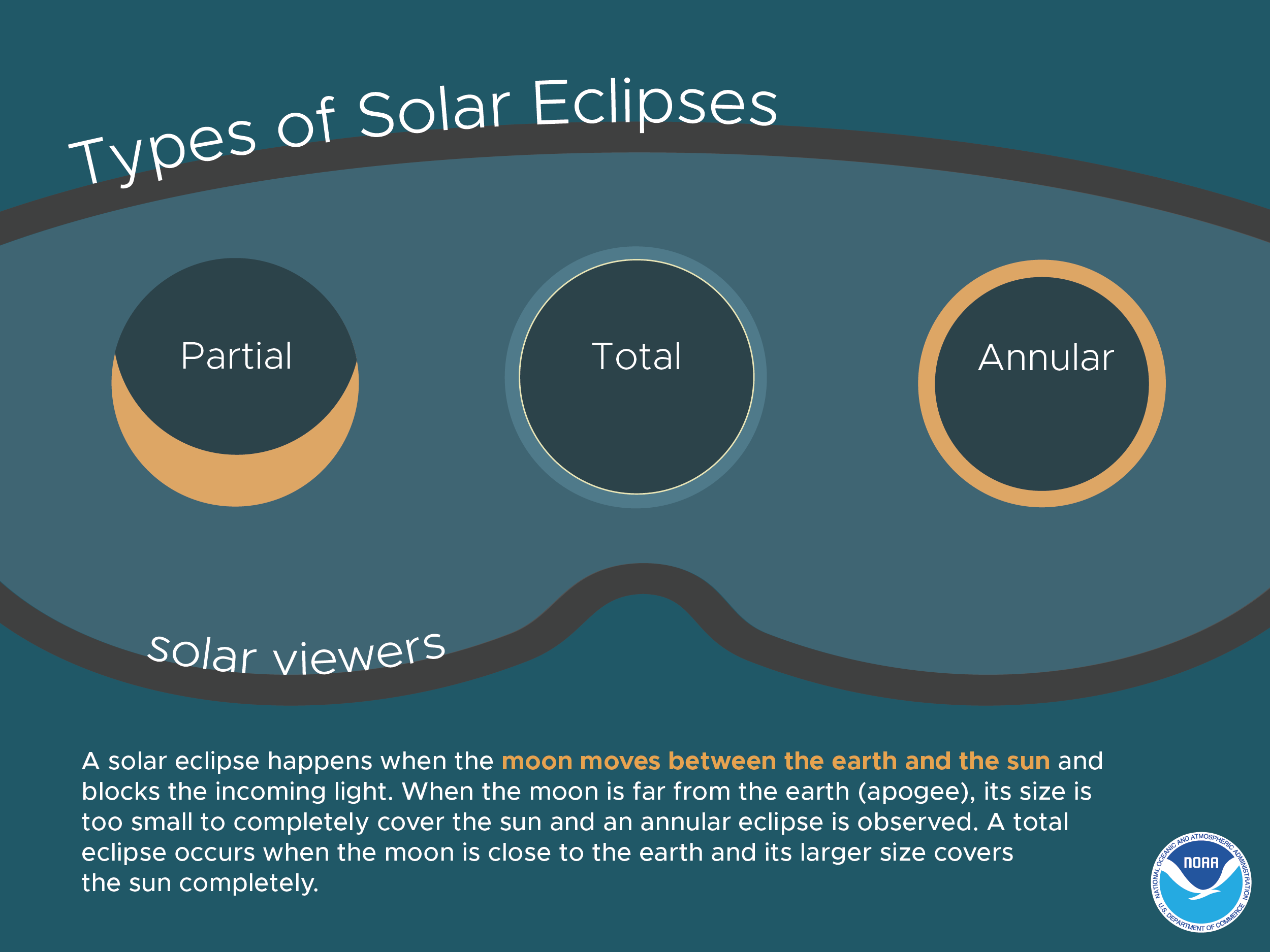
Learn more about Eclipses in the Weather Unlocked Video Series
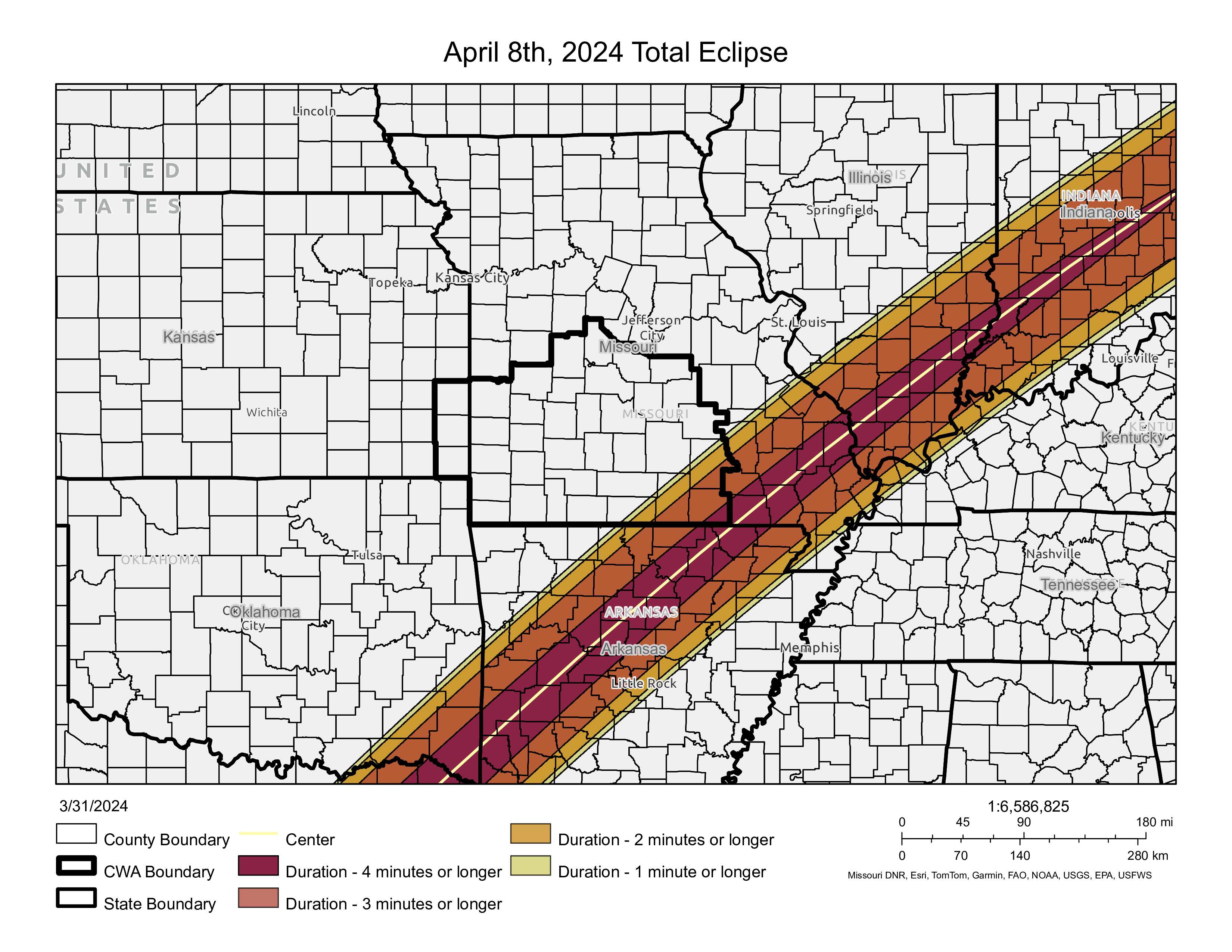
(credit to Aaron Updike of NWS Indianapolis)
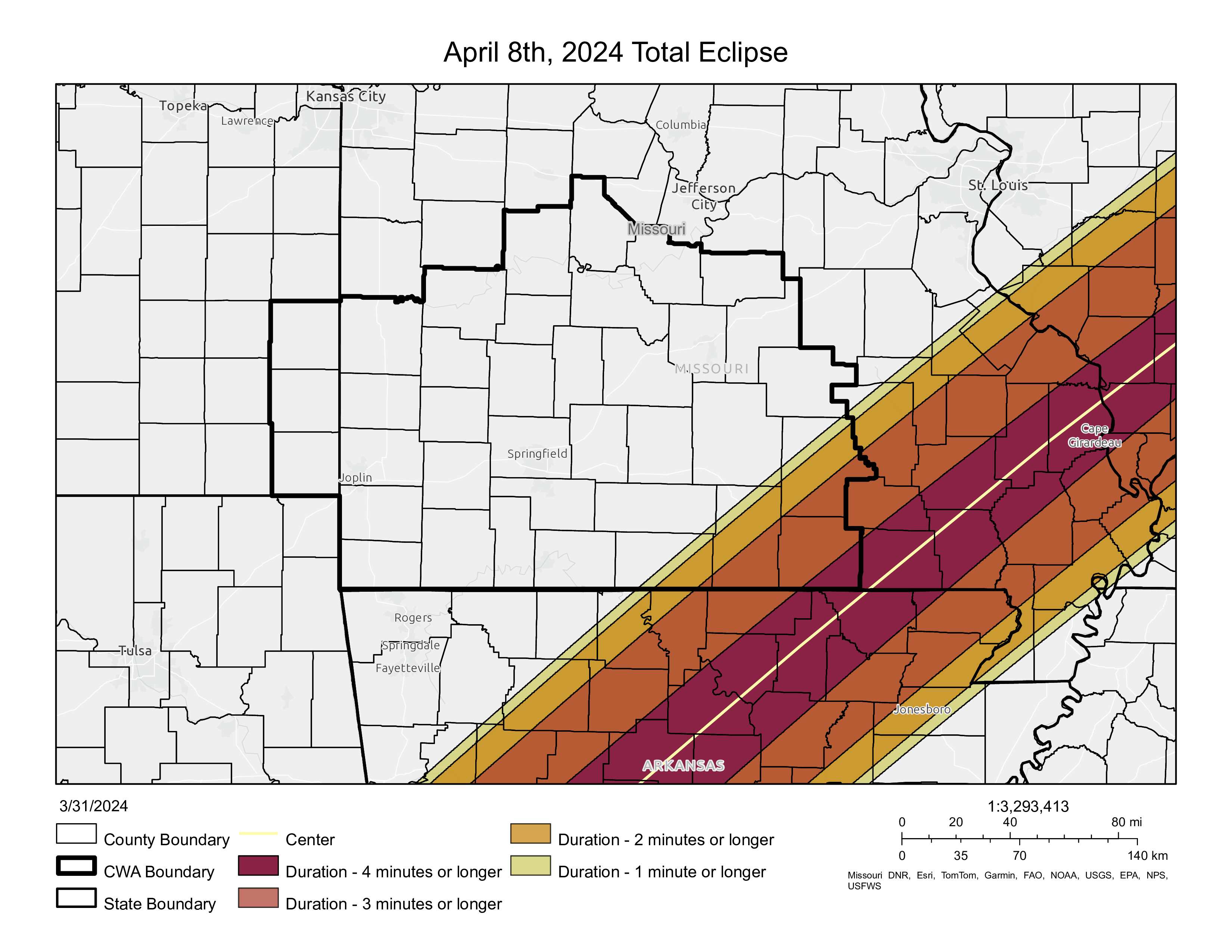
(credit to Aaron Updike of NWS Indianapolis)
Interactive Total Solar Eclipse Map
Be Prepared for the Weather
Continue to keep an eye on the forecast as we approach the date of the solar eclipse.
April can feature a wide variety of weather in the Missouri Ozarks, including thunderstorms producing frequent lightning, large hail, damaging winds, tornadoes, and flooding. If you're planning to visit the area, or to camp for the weekend, it's important to be prepared for this potential. Consider bringing a battery powered NOAA weather radio to receive warnings if cell networks are slow. Know where your nearest safe shelter is. Familiarize yourself with where the low water crossings in the area are in case of flooding, as you should NEVER drive through flooded roadways.
During the eclipse, you may feel a drop in temperature. This is because the moon is blocking the sun’s warming radiation from reaching us on Earth. The temperature may drop by 10 degrees or more, depending on cloud cover and ground-level humidity!
Check out some great information put together from NWS Springfield on the Timing, Average Cloud Cover, and Climatology of weather conditions.
Timing and Average Cloud Cover for Locations in the Total Solar Eclipse
Timing and Average Cloud Cover for Locations in the Partial Solar Eclipse
April 8th Climatology for Locations in the Total Solar Eclipse
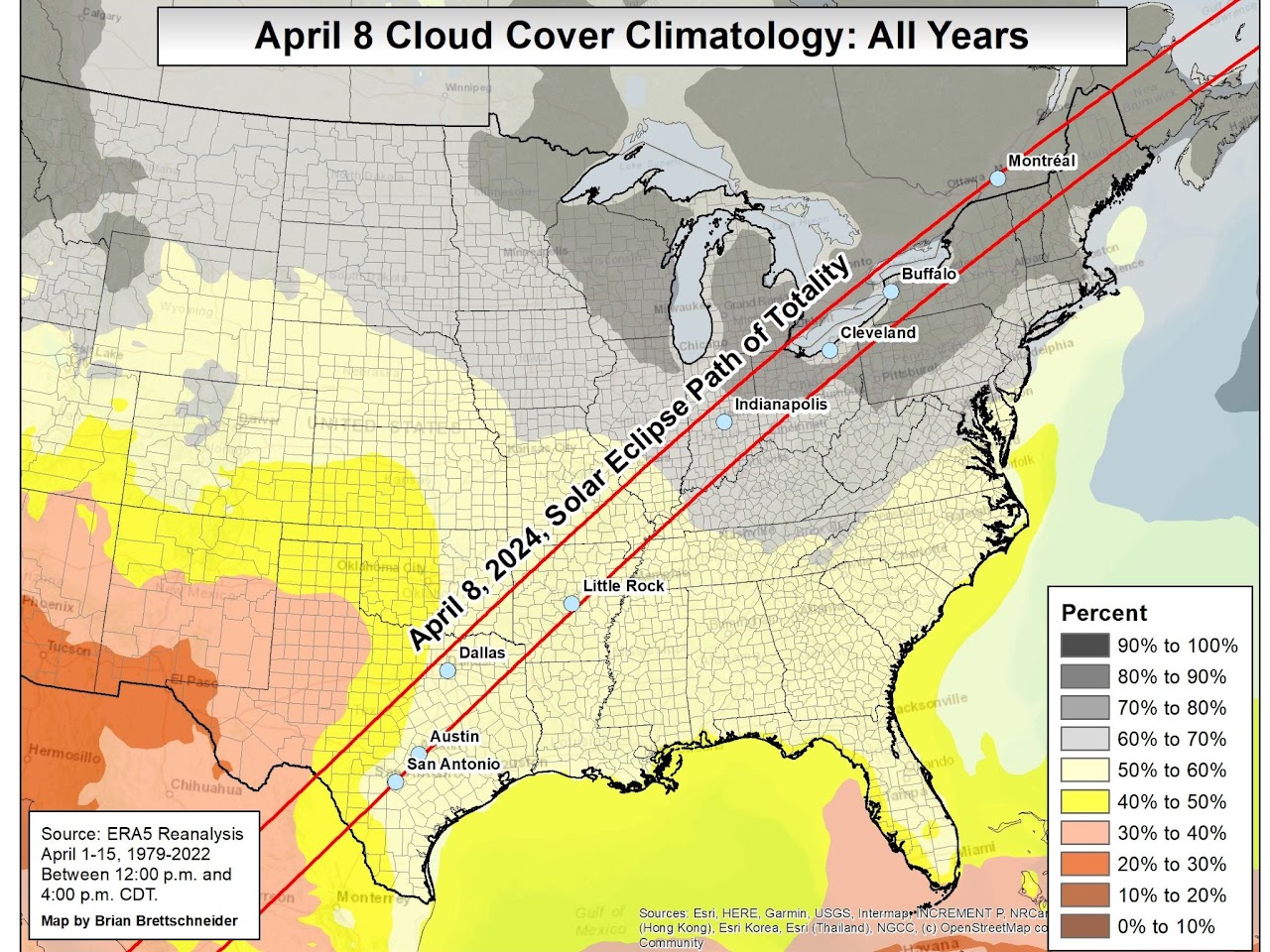
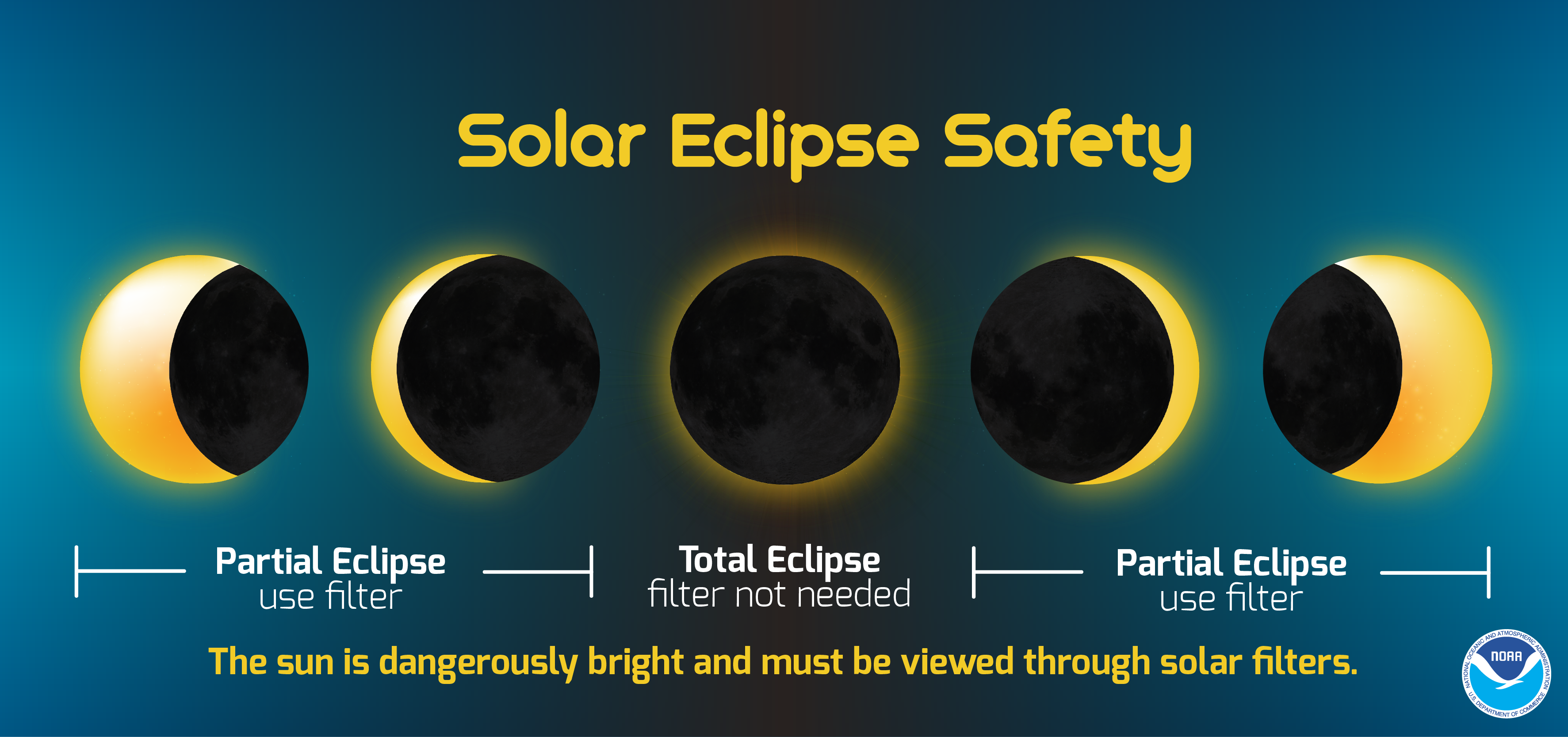
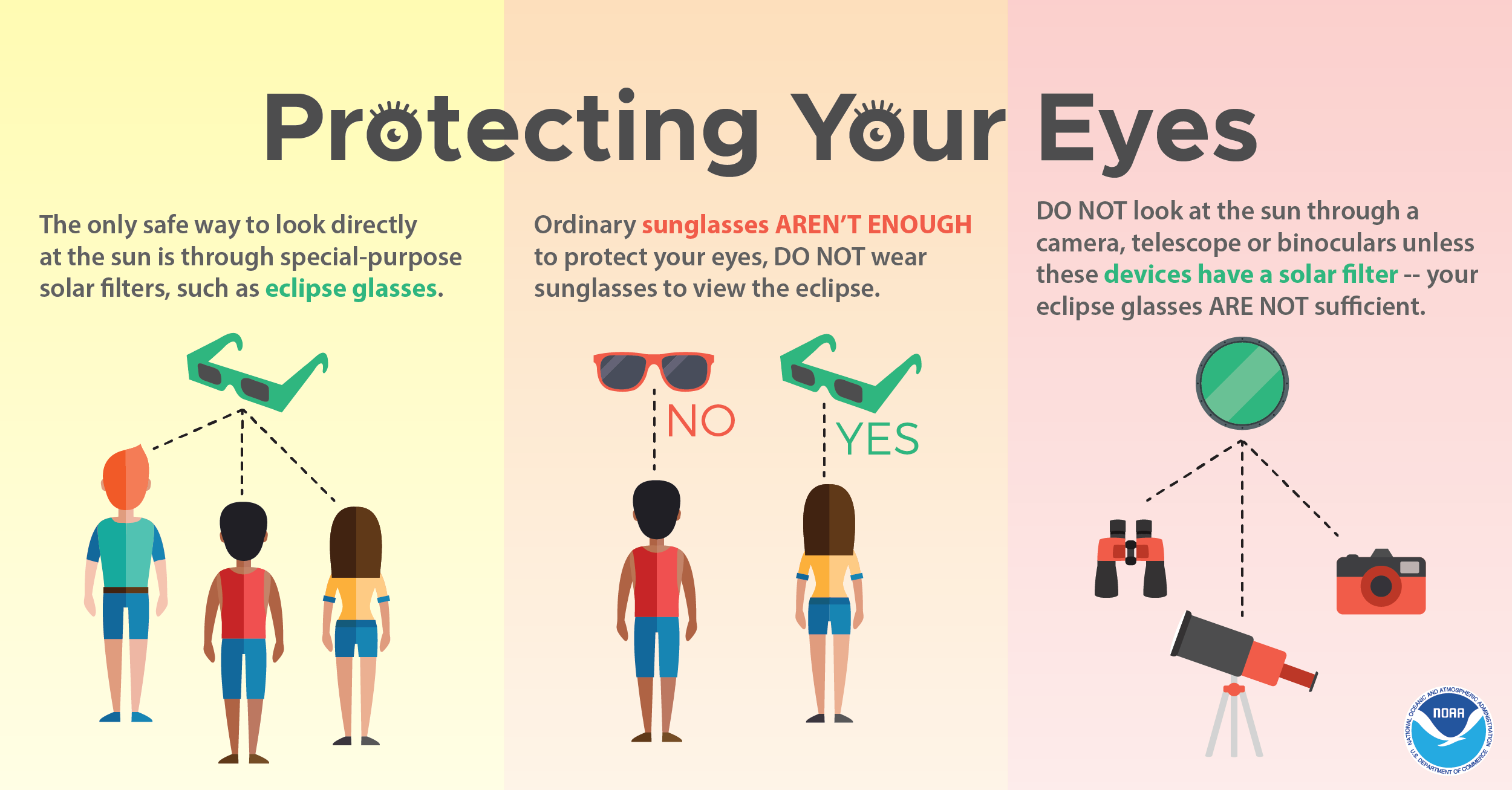
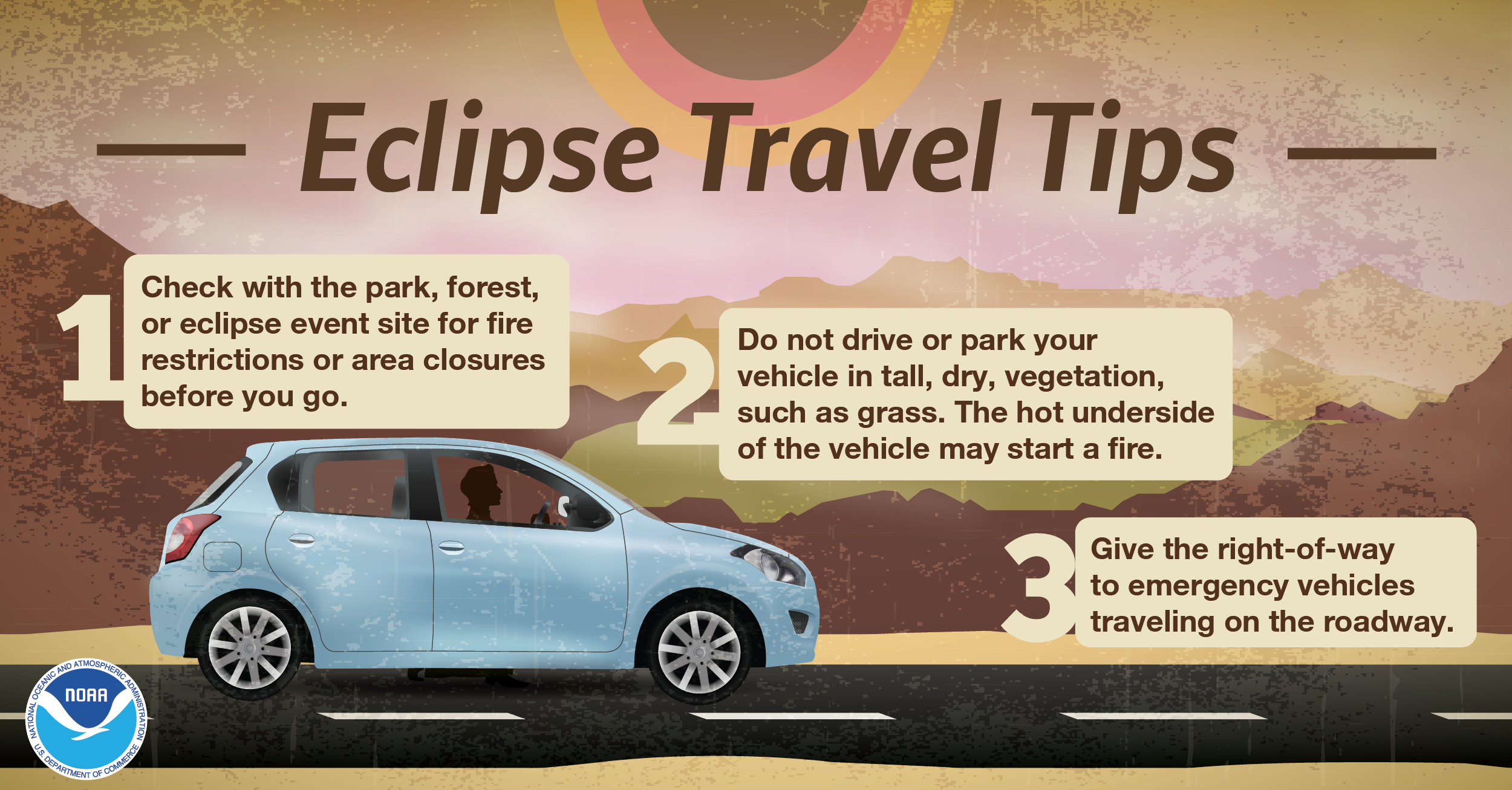
Eclipse Resources and Links